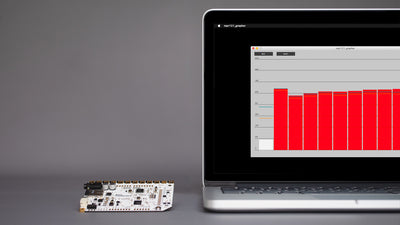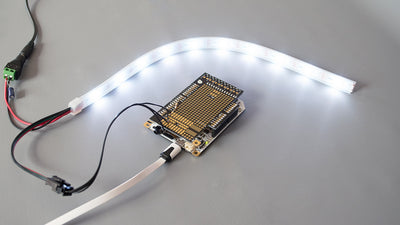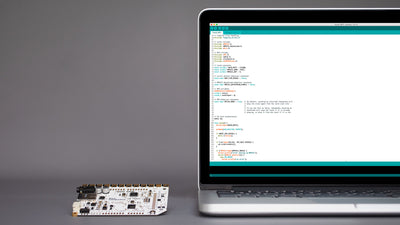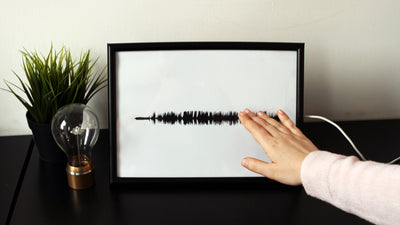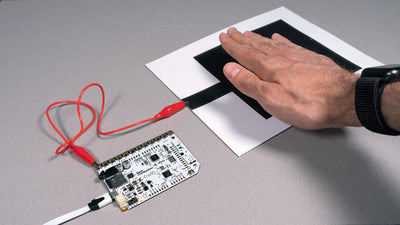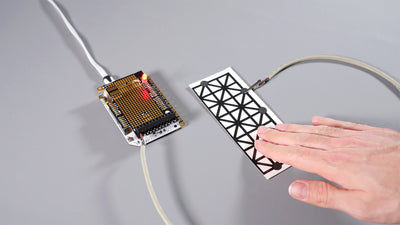Make A Paper MIDI Instrument

Discover how to unlock over 200 instrument sounds on your Touch Board
The Touch Board plays MP3 files out of the box, like those found in the built-in audio guide. But not everyone knows that the Touch Board comes pre-programmed with over 200 different MIDI instruments. Correctly set up, the Touch Board can become a piano, a guitar, a drum machine, and more!
This tutorial will show you how to use the Touch Board's stand-alone MIDI functionality, also known as real-time MIDI mode. You can paint custom instruments or use pre-printed instruments such as those included in our Interactive Workshop Pack. The Interactive Workshop Pack comes with everything you need to create this project, including printed piano, drum, and synthesizer sensors so you can create your own orchestra!
We love it when you share your projects! Post your project on Instagram, YouTube, or Twitter, and make sure to tag @bareconductive or use #bareconductive. You can also send your videos and photos to info@bareconductive.com so we can post them on our site for the world to see.
You will need:
- 1 x Touch Board
- 1 x Electric Paint 10ml tube
- 1 x Electric Paint keyboard (optional)
- 1 x USB Micro B to USB A or USB C (depending on your computer's USB port type)
- 1 x Computer running Mac OS, Windows or Linux
Step 1 Solder the MIDI solder bridges
To use the onboard MIDI functionality, you need to connect two solder bridges on the Touch Board. If you want to go back to MP3 playback mode and play MP3 sounds later, you will need to remove these solder joints. You can cold solder the bridges with Electric Paint by applying a bit of Electric Paint on the two MIDI bridges. Leave the Electric Paint a couple of minutes to dry. If you want to create a more permanent modification, you can also solder these bridges.
Step 2 Attach the board to the keyboard
The electrodes of the Touch Board are simulating the piano keys. You can extend from these electrodes with any conductive material you like. For this tutorial, we use a printed sensor with 12 piano keys, screen-printed with Electric Paint, for our piano instrument.
To attach the Touch Board to the keyboard, you can either use carbon dots or cold solder the device with Electric Paint. If you want to cold solder the Touch Board to your instrument print, please have a look at our cold soldering tutorial. If you're using conductive carbon stickers, first peel the white back off the first carbon sticker. With the back removed, take the keyboard stencil and attach the carbon sticker to the first key's end by pressing it down through the plastic. Make sure to center the carbon sticker onto the round node at the end of the key. Repeat the process with all 12 keys of the keyboard. Then, attach the Touch Board, carefully aligning the electrodes of the Touch Board with the carbon stickers.
Step 3 Upload the MIDI code onto the Touch Board
With the board attached to the piano keys, it's time to upload the MIDI code to the Touch Board. If you haven't already learned how to re-program your Touch Board, make sure to follow that tutorial now and then return here. Connect your Touch Board to your computer with the USB cable and turn the device on. In the Arduino IDE, go to
File→Sketchbook→Touch Board Examples→Midi_Piano
Make sure to select the correct Board and Port settings before hitting upload.
Step 4 Plug and Play
When you have uploaded the code, take a speaker or headphones, and connect it to the Touch Board. Try playing the keyboard on the paper. You should hear a sound when you touch a key. Enjoy playing the MIDI piano!
Step 5 Try other instruments
The MIDI code is set to "Acoustic Grand Piano" by default. If you want to try out a "Electric Grand Piano", simply change the instrument number at the beginning of the code. If you change the scale, change the numbers in the array "MELODIC_NOTES". On the other hand, if you want to try the drums, set the boolean "MELODIC_INSRUMENT" to "false".
You can also try out the different sensors. Detach the Touch Board from the piano carefully and attach it to a different like described in Step 2.


